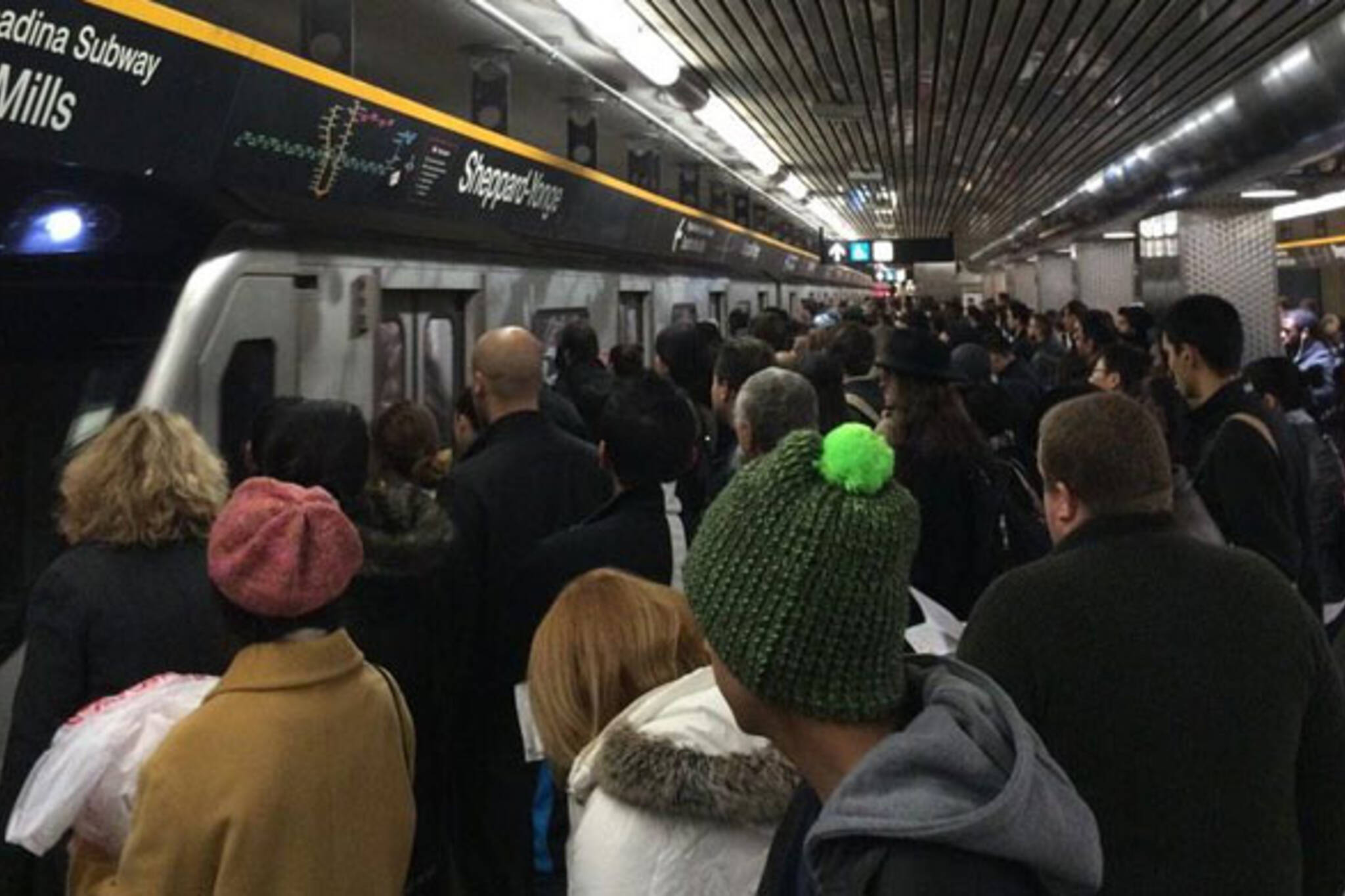
TTC signal problems make for a disastrous commute
Signal problems affecting the entire Bloor-Danforth line and parts of the Yonge line caused lengthy delays at the height of rush hour this morning. The massive outage comes a little more than a month after an metal I-beam punctured the roof of a subway tunnel near Dundas West, necessitating a shut down of the western portion of the subway.
It started shortly before 6:30am this morning when a signal-related problem on the Spadina line north of Museum knocked out service between Union and St. Clair West. An hour later, another signal issue on the Bloor-Danforth line east of Broadview grew in size to encompass the entire line from Kipling to Kennedy.
On Twitter there were reports of packed trains bypassing crowded stations. Some trains were stopped for long periods or forced to move at a walking pace between stations.
Amid the crush, passengers activated emergency alarms at Main Street, Coxwell, Greenwood, Sherbourne, and Ossington stations.
On the surface, a stalled streetcar at Dundas West station blocked both the 504 King and 505 Dundas lines at the height of the morning rush hour. On St. Clair, a collision briefly delayed the line westbound at Avenue Rd.
TTC CEO Andy Byford said the subway outages were likely caused by a blown fuse or a faulty relay. The TTC is currently in the process of replacing its entire signal system, parts of which date from the opening of the Yonge line in 1954. The project is due to be completed in 2018.
As of 10:20am, the TTC is reporting no delays on the Bloor-Danforth or Yonge lines. The streetcar problems have also now cleared.
UPDATE
The TTC has posted an explanation of this morning's problems to its website. It says two failures, one at St. George and another near Broadview station, brought the subway to its knees this morning. The issue at Broadview, which had the biggest effect on service, was traced to an electronic circuit that detects the presence of trains on the line.
"The system believed there was a train occupying that space," says TTC spokesman Brad Ross, causing signals in the area to show red. TTC safety procedure dictates that trains can only pass a red signal at walking pace, and it was this slow-down that had a knock-on effect to the rest of the line.
"It causes that domino effect, right across the line ... you can get away with [traveling at a crawl] for maybe 15 minutes with some residual impact behind you, but (because the line is a loop) it basically becomes congestion."
Chris Bateman is a staff writer at blogTO. Follow him on Twitter at @chrisbateman.
Image: @madina_mtm/Twitter.
Latest Videos
Latest Videos
Join the conversation Load comments







